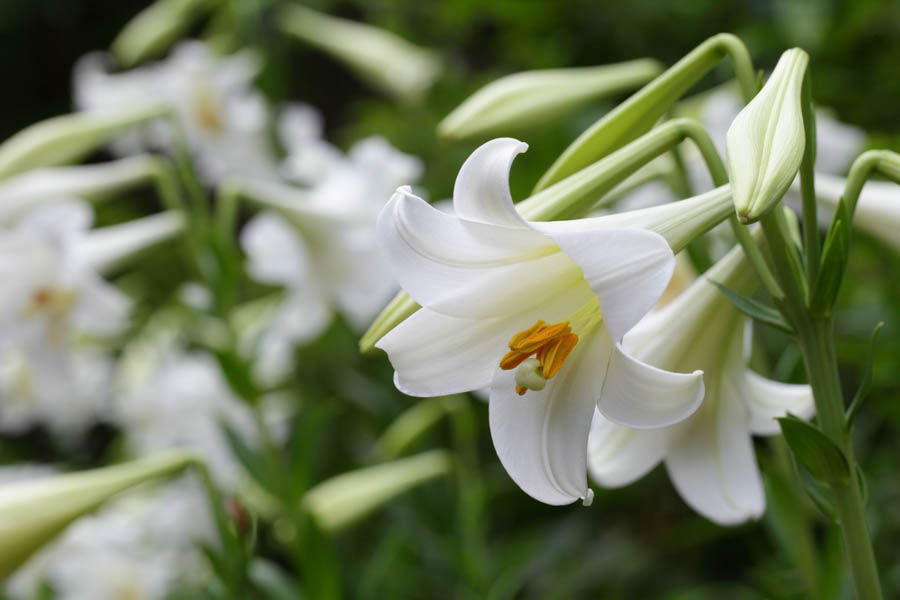Growing Easter Lilies After Easter

The trumpet-shaped white flowers of Easter Lilies, Lilium longiflorum, announce the arrival of spring as they arrive in mass in grocery stores, garden centers and flower shops. Once purchased, growing Easter Lilies is easy: remove the foil wrapping, place in bright, indirect light away from heat ducts, and keep the soil moist but not wet.
But once Easter is over, what should you do? Easter Lilies can be planted and grown outdoors for re-blooming in subsequent years if you follow a few simple steps. And California’s coastal areas and valleys generally make suitable micro-climates for growing Easter Lilies.
Begin by cutting off the faded blooms while leaving the stems and foliage intact. Water, keeping the soil most but not wet. Keep the lily inside until all danger of frost in your area has passed. Then place the lily outside in the shade for a few days to harden off, or acclimate to new surroundings.
Then get to work.
Choose a sunny location. Gardeners who live in areas with hot summers with temperatures are frequently above 90°F should choose a location where only the tops of the plants are in full sun or the plants receive filtered light.
Easter lilies are bulbs. Remove the bulbs from the pot and trim any yellow foliage. Loosen any compacted roots. Lilies want well-drained, loose, fertile soil with moderate organic matter. Dig a hole large enough to bury each bulb at a depth of 2 and a half times its diameter and plant bulbs at least 6 inches apart.
Water soil thoroughly. Do not allow the soil to go dry at any time of the year. Easter Lilies are not drought tolerant plants.
Cover the planting area with 1 to 2 inches of mulch but remove the mulch from any emerging new growth; mulch will help to ensure that the soil retains moisture and the roots are kept cool.
Monitor new growth for aphids; remove aphids by squashing them with your fingers or blasting them with water from a garden hose.
Be patient. Easter Lilies bloom once per year in mid-summer. Remember that Easter Lilies sold before Easter have been grown in greenhouses with very specific microclimates designed to “force” the plants to bloom much earlier than normal. An Easter Lily that has been forced to bloom in the spring needs to store energy before it can bloom again, which will probably not occur until mid-summer of the following year.
Growing tip: gardeners who live in areas with extremely warm to hot summers may find that growing Easter Lilies outdoors is easier in containers: containers allow gardeners to move plants to adjust for seasonal changes and to maintain a higher level of soil moisture than may be possible in many landscapes.
GardenZeus has customized gardening information by plant and zip code. To get started, enter your zip code here.